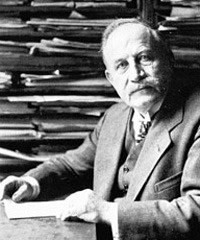Ernst Herzfeld (1879-1948), whilst not an "artist" or professional photographer, was a pioneering archaeologist and historian who played a foundational role in the development of ancient Near Eastern and Iranian studies at the beginning of the 20th Century. He has also been cited as being "instrumental in establishing the field of Islamic art history" . Born in 1879, near Hanover in Germany, Herzfeld studied ancient languages, history, geography and architecture. Following his first visit to Iran in 1905, Herzfeld gained his PhD in 1907, with a thesis on Pasargadae. In 1917, Herzfeld was appointed associate professor of historical geography and art history of the ancient Orient at the University of Berlin and in 1920, became the first full professor of Near Eastern archaeology. Between 26 November to 23 December 1923, and 2 March to 15 March 1924, Herzfeld spent six weeks on the terrace of Persepolis, where he drafted plans of the structure and provided a photographic record of the site. The gelatin silver prints in the Nelson collection are from this photographic record of Persepolis and Naqsh-i Rustam. The glass negatives from this project are now located in the Ernst Herzfeld papers, the Freer Gallery of Art and Arthur M. Sackler Gallery Archives, the Smithsonian Institution, in Washington, D.C. . Other documents from his work are also located in the Metropolitan Museum, New York. In 1928, Herzfeld was appointed director of the Persepolis excavations for the Oriental Institute at the University of Chicago, a post he held until 1934. Herzfeld was a faculty member of Humanistic Studies at the Institute for Advanced Study between 1936 and 1944 and Emeritus from 1944 until his death, in 1948.
